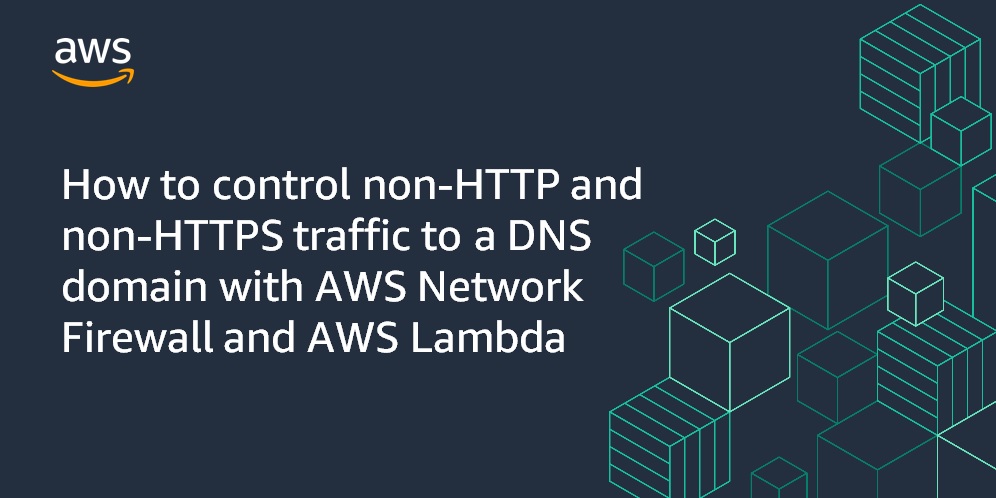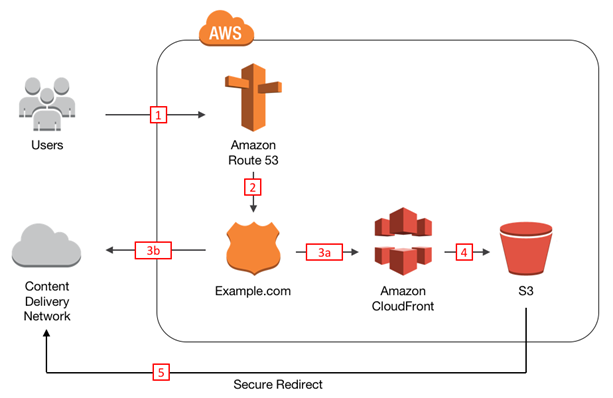AWS Security Blog
Tag: DNS
How to control non-HTTP and non-HTTPS traffic to a DNS domain with AWS Network Firewall and AWS Lambda
December 7, 2022: We added a caveat to the solution, for those using a traffic steering mechanism, in this post. Security and network administrators can control outbound access from a virtual private cloud (VPC) to specific destinations by using a service like AWS Network Firewall. You can use stateful rule groups to control outbound access […]
How to protect a self-managed DNS service against DDoS attacks using AWS Global Accelerator and AWS Shield Advanced
In this blog post, I show you how to improve the distributed denial of service (DDoS) resilience of your self-managed Domain Name System (DNS) service by using AWS Global Accelerator and AWS Shield Advanced. You can use those services to incorporate some of the techniques used by Amazon Route 53 to protect against DDoS attacks. […]
How to set up an outbound VPC proxy with domain whitelisting and content filtering
May 12, 2025: We’ve updated the CloudFormation template to use a launch template instead of a launch configuration. November 16, 2020: We’ve updated the CloudFormation template and the launch stack URL used in this solution. July 24, 2019: We’ve added a link to a GitHub repository that contains the stack content for this solution. Controlling […]
Enhanced Domain Protections for Amazon CloudFront Requests
Over the coming weeks, we’ll be adding enhanced domain protections to Amazon CloudFront. The short version is this: the new measures are designed to ensure that requests handled by CloudFront are handled on behalf of legitimate domain owners. Using CloudFront to receive traffic for a domain you aren’t authorized to use is already a violation […]
How to centralize DNS management in a multi-account environment
Note from June 5, 2019: The approach and architecture in this post is recommended if you prefer more control over DNS servers or prefer to use AWS Managed Active Directory for DNS resolution, however there are some limitations to this approach and we added a “Limitations and additional considerations” section to this post to describe […]
How to Help Protect Dynamic Web Applications Against DDoS Attacks by Using Amazon CloudFront and Amazon Route 53
Using a content delivery network (CDN) such as Amazon CloudFront to cache and serve static text and images or downloadable objects such as media files and documents is a common strategy to improve webpage load times, reduce network bandwidth costs, lessen the load on web servers, and mitigate distributed denial of service (DDoS) attacks. AWS […]
How to Protect Your Web Application Against DDoS Attacks by Using Amazon Route 53 and an External Content Delivery Network
Distributed Denial of Service (DDoS) attacks are attempts by a malicious actor to flood a network, system, or application with more traffic, connections, or requests than it is able to handle. To protect your web application against DDoS attacks, you can use AWS Shield, a DDoS protection service that AWS provides automatically to all AWS […]
How to Set Up DNS Resolution Between On-Premises Networks and AWS Using AWS Directory Service and Microsoft Active Directory
In my previous post, I showed how to use Simple AD to forward DNS requests originating from on-premises networks to an Amazon Route 53 private hosted zone. Today, I will show how you can use Microsoft Active Directory (also provisioned with AWS Directory Service) to provide the same DNS resolution with some additional forwarding capabilities. […]
How to Set Up DNS Resolution Between On-Premises Networks and AWS Using AWS Directory Service and Amazon Route 53
As you establish private connectivity between your on-premises networks and your AWS Virtual Private Cloud (VPC) environments, the need for Domain Name System (DNS) resolution across these environments grows in importance. One common approach used to address this need is to run DNS servers on Amazon EC2 across multiple Availability Zones (AZs) and integrate them […]
How to Help Prepare for DDoS Attacks by Reducing Your Attack Surface
Distributed denial of service (DDoS) attacks are sometimes used by malicious actors in an attempt to flood a network, system, or application with more traffic, connections, or requests than it can handle. Not surprisingly, customers often ask us how we can help them protect their applications against these types of attacks. To help you optimize […]









